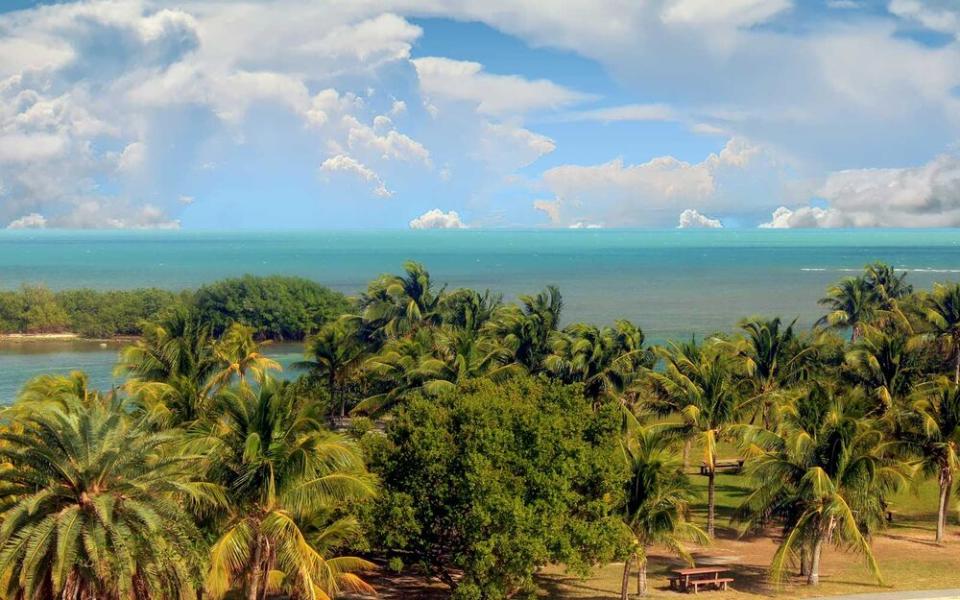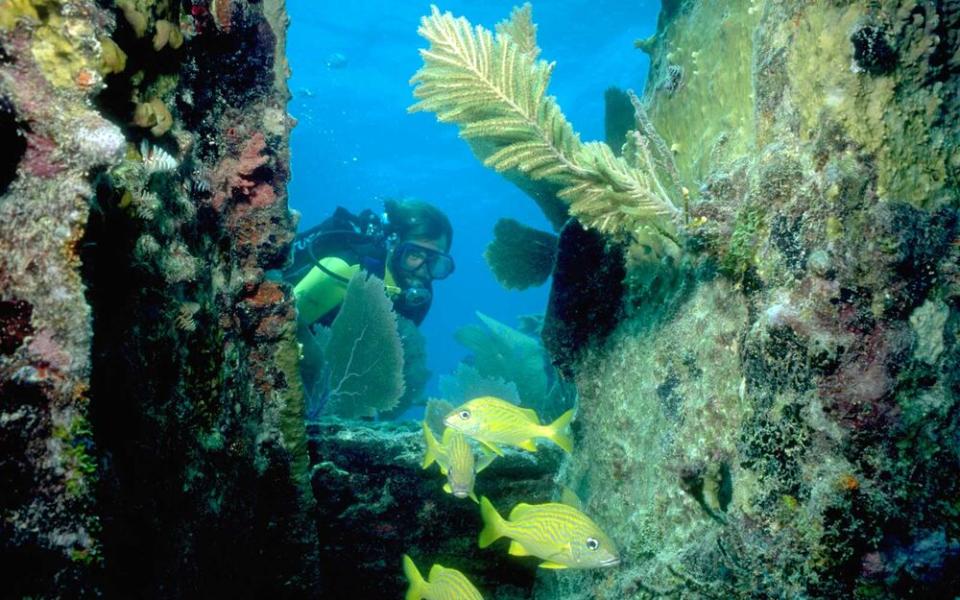Guide to Visiting Biscayne National Park
National parks are among our country’s most treasured assets, but not all of them encompass 173,000 acres of coral reefs, tropical islands, mangrove forests, turquoise waters, and 10,000 years of human history. Leave it to Florida to give us a perfectly tropical take on national parkland — one you can access only by boat, since 95% of the park is comprised of water.
You can see the Miami skyline from Biscayne National Park, part of the chain of Florida Keys, and yet visiting feels like stepping onto another planet. Biscayne National Park's snorkeling is some of the nation’s best, complete with colorful coral, shipwrecks, sea life, and more, waiting to be discovered under the surface.
Planning a visit to Biscayne National Park? Here's everything you need to know before you go.
Related: More national park trip ideas

Planning a Trip to Biscayne National Park
Located between Miami and the Florida Keys, Biscayne National Park is open 24 hours a day, 365 days per year, and is completely free to visit — there are no entrance fees or passes required. However, the park’s islands, reefs, and other natural attractions are only accessible by boat. Guided tours are available.
The Dante Fascell Visitor Center is located at 9700 SW 328th Street, Sir Lancelot Jones Way, in Homestead, Florida. Spend time learning about the park in the onsite museum, which displays films, a virtual journey through the park’s four ecosystems, and a gallery of work by local artists inspired by the park. Kids can get hands-on at the touch table or begin working toward a junior ranger badge.
Many boat tours and programs begin at the Dante Fascell Visitor Center, and it’s open every day from 9 a.m. to 5 p.m.
Best Time to Visit Biscayne National Park
Thanks to Florida’s year-round sunshine and aversion to winter, there’s no bad time to visit.
Still, the best time to visit Biscayne National Park depends on your plans: if you want to snorkel or dive, for example, the water is warmest during the summer, and you likely won’t even need a wetsuit. But if you’re more interested in Biscayne National Park camping, Florida summers are known to be sweltering and buggy, so it would be best to visit during cooler months.
Keep in mind that mosquitoes are a factor year-round, and hurricane season lasts from June to November. Florida is frequently located in the path of hurricanes, so plan accordingly — you can still visit during hurricane season, of course, but come prepared with a backup plan in case a storm forms.

Things To Do at Biscayne National Park: Snorkeling, Camping, and More
Biscayne National Park is ripe with outdoor adventure. After checking out the Dante Fascell Visitor Center, you can boat, camp, canoe, kayak, snorkel, wander island trails, take fishing classes, or patiently await a wildlife spotting — dolphins, turtles, and many types of birds and fish call the park home.
The park is composed of a series of small, low-lying, sandy islands called keys. The largest is Elliott Key, which was once home to early-Florida pioneers who lived on the island and worked as pineapple farmers, spongers, or wreckers. Today, visitors can camp (there’s an overnight docking fee of $25) or spend the day swimming, hiking, fishing, or picnicking.
The other campground in Biscayne National Park (there are a total of two) is located on Boca Chita Key, the most visited island in the park. Boca Chita Key is home to a 65-foot lighthouse built in the 1930s, which has an observation deck at the top where visitors can enjoy views of the bay and Miami in the distance.
Biscayne National Park camping is available on a first-come, first-served basis. Camping and docking fees are waived every summer from May 1 to September 30, but be prepared to face heavier populations of insects.
You can also visit Adams Key, once a favored retreat for U.S. presidents. Today, it’s open for day use only; you can picnic or explore a hardwood hammock on a short trail.
The Maritime Heritage Trail is the crown jewel of Biscayne National Park snorkeling, an underwater haven for snorkelers and scuba divers alike. Biscayne National Park is the final resting place of many shipwrecks spanning centuries, and the Maritime Heritage Trail is where you can explore their remains. You can also swim around the base of the Fowey Rocks Lighthouse, built in 1878 after the nearby wreck of the S.S. Arratoon Apcar.
Want to add more history into your outdoor adventuring? The Jones Family Historic District and Lagoon is a favorite among kayakers. Listed on the National Register of Historic Places, the Jones Family Historic District consists of Porgy Key and Totten Key, where the Jones family grew pineapples and key limes in the 1800s. Upon the sale of their 277 acres, they became millionaires — an uncommon fate for African-Americans in the early twentieth-century American South.
Another item of interest is a group of seven overwater stilt houses, called Stiltsville, in the northern area of the park. However, Stiltsville is closed to the public.
%image1
Where to Stay Near Biscayne National Park
Not up for camping at Biscayne National Park? There are plenty of non-tented options nearby, including a range of hotel chains in Homestead, which is a half-hour drive due west of the park.
Staying in Homestead gives you easy access to off-the-beaten-path Florida gems such as the Coral Castle and Robert Is Here Fruit Stand, home of the world’s most mouthwatering fresh fruit milkshakes.
However, to maximize your vacation days, consider staying in Miami or the Keys and making a day trip out of Biscayne National Park. Key Largo is about an hour’s drive south of the park, and it feels a bit like jetting off to a tropical island, no passport required. Or head north to stay in Miami hotspots like Coconut Grove, South Beach, or Key Biscayne, each a little over an hour’s drive from the park.

